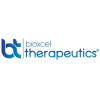Sub-Lingual Dexmedetomidine in Agitation Associated With Schizophrenia
Agitation, Schizophrenia

About this trial
This is an interventional treatment trial for Agitation
Eligibility Criteria
Inclusion Criteria:
- Male and female patients between the ages of 18 to 65 years, inclusive.
- Patients who have met Diagnostic and Statistical Manual (DSM) -5 criteria for schizophrenia, schizoaffective, or schizophreniform disorder.
- Patients who are judged to be clinically agitated at Baseline with a total score of ≥ 14 on the 5 items (poor impulse control, tension, hostility, uncooperativeness, and excitement) comprising the PANSS Excited Component (PEC).
- Patients who have a score of ≥ 4 on at least 1 of the 5 items on the PEC.
- Patients who read, understand and provide written informed consent.
- Patients who are in good general health prior to study participation as determined by a detailed medical history, physical examination, 12-lead ECG, blood chemistry profile, hematology, urinalysis and in the opinion of the Principal Investigator.
- Female participants, if of child-bearing potential and sexually active, and male participants, if sexually active with a partner of child-bearing potential, who agree to use a medically acceptable and effective birth control method throughout the study and for one week following the end of the study. Medically acceptable methods of contraception that may be used by the participant and/or his/her partner include abstinence, birth control pills or patches, diaphragm with spermicide, intrauterine device (IUD), condom with foam or spermicide, vaginal spermicidal suppository, surgical sterilization and progestin implant or injection. Prohibited methods include: the rhythm method, withdrawal, condoms alone, or diaphragm alone.
Exclusion Criteria:
- Patients with agitation caused by acute intoxication, including positive identification of alcohol by breathalyzer or non-prescription drugs (with the exception of THC) during urine screening.
- Patients treated within 4 hours prior to study drug administration with benzodiazepines, other hypnotics or oral or short-acting intramuscular antipsychotics.
- Treatment with alpha-1 noradrenergic blockers (terazosin, doxazosin, tamsulosin, and alfuzosin, and prazosin) or other prohibited medications.
- Patients with significant risk of suicide or homicide per the investigator's assessment, or any suicidal behavior in last 6 months prior to screening.
- Female patients who have a positive pregnancy test at screening or are breastfeeding.
- Patients who have hydrocephalus, seizure disorder, or history of significant head trauma, stroke, transient ischemic attack, subarachnoid bleeding, brain tumor, encephalopathy, meningitis, Parkinson's disease or focal neurological findings.
- History of syncope or other syncopal attacks, current evidence of hypovolemia, orthostatic hypotension, a screening heart rate of < 55 beats per minutes or systolic blood pressure <110 mmHg or diastolic BP <70 mmHg.
- Patients with laboratory or ECG abnormalities considered clinically significant by the investigator or qualified designee [Advanced heart block (second-degree or above atrioventricular block without pacemaker), diagnosis of Sick sinus syndrome] that would have clinical implications for the patient's participation in the study.
- Patients with serious or unstable medical illnesses. These include current hepatic (moderate-severe hepatic impairment), renal, gastroenterologic, respiratory, cardiovascular (including ischemic heart disease, congestive heart failure), endocrinologic, or hematologic disease.
- Patients who have received an investigational drug within 30 days prior to the current agitation episode.
- Patients who are unable to use the sublingual film or considered by the investigator, for any reason, to be an unsuitable candidate for receiving dexmedetomidine; e.g. patients with a history of allergic reactions to dexmedetomidine.
Sites / Locations
- BioXcel Clinical Research Site
- BioXcel Clinical Research Site
- BioXcel Clinical Research Site
- BioXcel Clinical Research Site
- BioXcel Clinical Research Site
- BioXcel Clinical Research Site
- BioXcel Clinical Research Site
- BioXcel Clinical Research Site
- BioXcel Clinical Research Site
- BioXcel Clinical Research Site
- BioXcel Clinical Research Site
- BioXcel Clinical Research Site
Arms of the Study
Arm 1
Arm 2
Arm 3
Arm 4
Arm 5
Placebo Comparator
Experimental
Experimental
Experimental
Experimental
Placebo
20 micrograms
60 micrograms
120 micrograms
180 micrograms
Sublingual Film with no active drug; single administration with the possibility of repeating dose after 1 hour in case of lack of significant efficacy
Sublingual Film containing 20 micrograms BXCL501; single administration with the possibility of repeating dose after 1 hour in case of lack of significant efficacy
Sublingual Film containing 60 micrograms BXCL501; single administration with the possibility of repeating dose after 1 hour in case of lack of significant efficacy
2 Sublingual Films, each containing 60 micrograms BXCL501; single administration of 2 films with the possibility of repeating dose after 1 hour in case of lack of significant efficacy
2 Sublingual Films, each containing 60 micrograms BXCL501.
Outcomes
Primary Outcome Measures
Secondary Outcome Measures
Full Information
1. Study Identification
2. Study Status
3. Sponsor/Collaborators
4. Oversight
5. Study Description
6. Conditions and Keywords
7. Study Design
8. Arms, Groups, and Interventions
10. Eligibility
12. IPD Sharing Statement
Learn more about this trial
